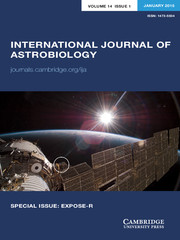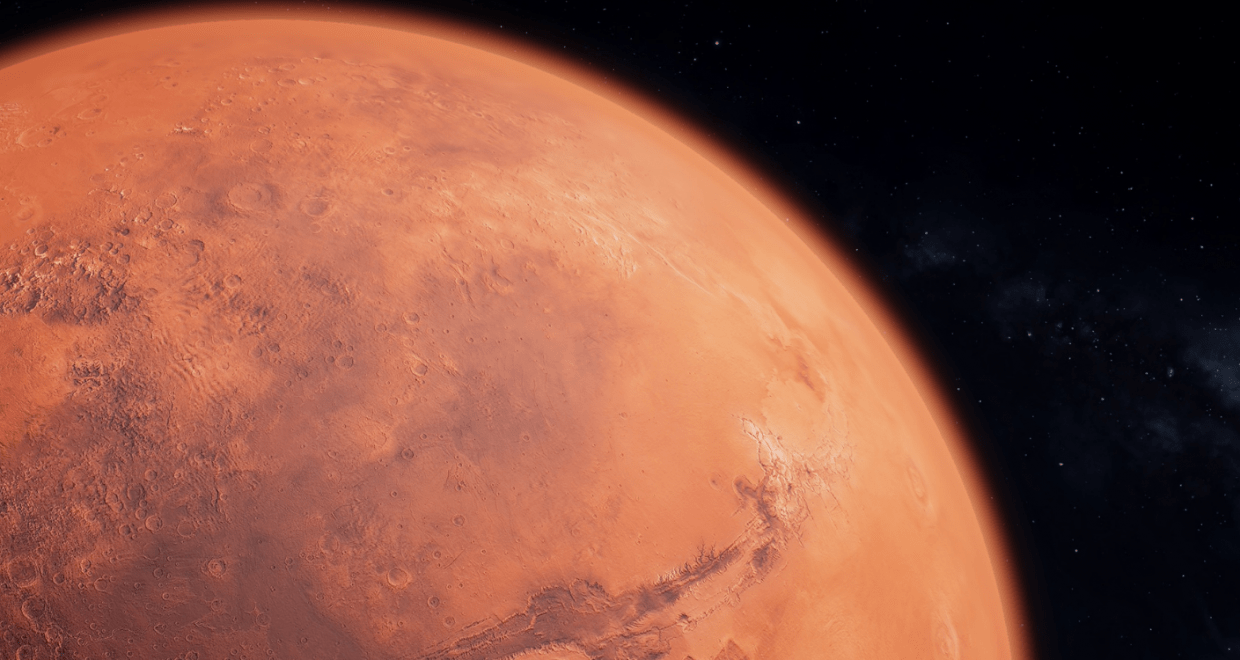The long search for Martian life
Life on Mars is the hot topic of the decade. The NASA missions Mars Science Laboratory in Gale Crater and Mars 2020 in Jezero Crater are searching for traces of martian life. The European/Russian rover mission ExoMars 2022 will be launched in September 2022 to search for life in Oxia Planum. In fact, we have been looking for life on Mars since the 1970s when the two Viking landers touched down on the surface of the planet in 1976.
The problem was that Viking did not find any convincing evidence for life, only a cold barren desert. That put a damper on any future missions – until 1996. That year saw the publishing of a seminal paper that was nothing less than a paradigm jump. David McKay of the Johnson Space Center and his colleagues described features in the oldest martian meteorite, Allan Hills 84001 dating to 4.09 billion years, that seemed to resemble traces left behind by microbial activity [1]. Neophytes in the study of biosignatures, they approached to the task in the multidisciplinary manner that is today standard practice for establishing the biogenicity of specific features. Firstly, they demonstrated that the rocky context was compatible with the presence of microbes, determining that the mineral salts in which the purported biosignatures were embedded had been formed by relatively low temperature water percolating through cracks in the martian igneous rock. Then they observed mineralogical shapes that looked like fossilised microbes, as well as tiny magnetite crystals that resembled exactly those produced by one species of magnetotactic bacteria on Earth. Finally, they detected organic molecules in the meteorite, which they interpreted as issuing from the degradation of microbial remains. Putting all this data together, they surmised that martian microbes, including the kinds of microorganisms similar to terrestrial magnetotactic bacteria, had infiltrated the cracks in the igneous extrusive rock, become fossilised by carbonate salts, and thus preserved until the rock was ejected and landed on Earth.
Each one of the analyses made was, at the time state of the art and the ensemble of data was impeccable. Nevertheless, the interpretation that traces of past martian life had been detected is now widely understood to be erroneous. However, 25 years ago very little was understood about microbes, their interaction with geology, and the preservation of their traces, especially by the geologists and geochemists deciphering meteorites. This paper changed the situation, freeing up funding that has allowed many research groups around the world to delve deeply into the topic of microbes and their preservation. Our paper On biosignatures for Mars is a review with a difference. We do not seek to cover all known knowledge on the subject, rather, taking the Allan Hills 84001 meteorite as a starting point, we draw on pertinent examples to illustrate what we now know about biosignatures, the importance of geological and mineralogical context, how traces of life can be fossilised and preserved over geological time, and with what kinds of minerals and salts (including as examples, carbonate, silica, phyllosilicates, and evaporite minerals,), all examples having relevance to the landing sites of the Mars missions mentioned above.
We conclude thus: The McKay et al. (1996) paper was a seminal benchmark that stimulated the opening of the field of astrobiology and the search for life on Mars. Despite the fact that the weight of subsequent experiments and understanding of the microbial world and its preservation in the rock record shows that the original conclusions by McKay et al. were incorrect, their multiscale and multi-technique approach to documenting a variety of types of complementary, potential biosignatures paved the way for future work. A key parameter that was missing was the in situ geological context (which could, however be surmised).”

[1] McKay DS, Gibson EK, Thomas-Keprta KL, Vali H, Romanek CS, Clemett SJ, Chillier XD, Maechling CR and Zare RN (1996) Search for past life on Mars: Possible relic biogenic activity in Martian meteorite ALH84001. Science 273, 924–930.

Title: On biosignatures for Mars
Authors: Frances Westall, Keyron Hickman-Lewis, Barbara Cavalazzi, Frédéric Foucher, Laura Clodoré and Jorge L. Vago
Published Open Access in International Journal of Astrobiology






